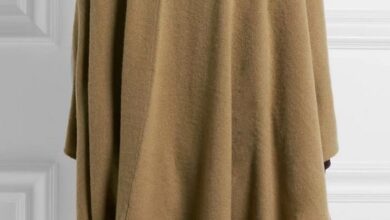
When it comes to outdoor activities like skiing, mountaineering, or glacier hiking, glacier glasses play an essential role in protecting our eyes from the sun’s harmful rays. However, a common question arises:
Why are glacier glasses not polarized?
In this article, we will explore the unique characteristics of glacier glasses, the reasons behind their non-polarized lenses, and the benefits of choosing them for high-altitude environments.
Understanding Glacier Glasses
What Are Glacier Glasses?
Glacier glasses are specialized eyewear designed to protect your eyes from intense sunlight reflecting off snow and ice. Unlike regular sunglasses, these glasses typically feature:
Wraparound Design: This provides maximum coverage, preventing sunlight from entering from the sides.
High UV Protection: They offer 100% protection against harmful UV rays, which are particularly intense at higher altitudes.
Impact Resistance: Many glacier glasses are made from shatterproof materials to withstand the rigors of outdoor activities.
The Role of Polarization in Sunglasses
What Does Polarization Do?
Polarization is a lens feature that reduces glare from surfaces like water or shiny roads. It works by filtering out horizontal light waves, which are responsible for glare, allowing only vertical waves to pass through. This is particularly useful for activities like fishing or driving.
Why Polarization Is Not Essential for Glacier Glasses
While polarization is beneficial in many contexts, it is not a requirement for glacier glasses due to several factors:
Nature of Glare in Snowy Environments:
In snowy conditions, glare is primarily a result of reflective sunlight. The sheer intensity of UV rays is more concerning than the type of glare, making UV protection the priority.
Depth Perception: Polarized lenses can sometimes interfere with depth perception. This is crucial in snowy environments where ice and snow can create deceptive visual cues. Non-polarized lenses allow for better clarity and contrast, helping adventurers navigate tricky terrain.
Cost and Accessibility: Polarized lenses can increase manufacturing costs. For those who need affordable yet effective eye protection, non-polarized glacier glasses can be a more accessible option.
The Benefits of Non-Polarized Glacier Glasses
Optimal UV Protection
One of the standout features of **glacier glasses** is their ability to provide complete UV protection. This is vital in high-altitude environments where UV rays can cause severe eye damage. Non-polarized glacier glasses typically offer:
100% UVA and UVB Protection: Shielding the eyes from both types of harmful rays.
Enhanced Visibility: By allowing more light to pass through without filtering it out, these glasses help in identifying hazards, such as crevasses or changes in terrain.
Superior Contrast and Clarity
Non-polarized lenses often enhance contrast and clarity in snowy conditions. This is particularly important for:
Navigating Terrain: Clear visibility is essential for recognizing subtle changes in the landscape.
Identifying Ice Patches: Non-polarized lenses can highlight variations in texture and color, making it easier to spot potential dangers.
Durability and Design
Glacier glasses are typically designed to withstand harsh environmental conditions. This includes:
Robust Frame Materials: Many models use durable plastics or metals that resist breakage and bending.
Anti-Fog Features: Essential for maintaining visibility during strenuous activities, preventing fogging due to temperature changes.
Choosing the Right Glacier Glasses
Factors to Consider
When selecting glacier glasses, it’s important to consider several factors:
Lens Tint: Choose lenses that enhance contrast while providing sufficient light filtration. Darker tints may be beneficial in extremely bright conditions.
Fit and Comfort: Ensure the glasses fit snugly to prevent slipping during activities. Look for adjustable features that can enhance comfort.
Interchangeable Lenses: Some models offer interchangeable lenses for varying conditions, allowing users to adapt their eyewear to changing environments.
Popular Brands and Models
Some brands are renowned for their quality glacier glasses. Notable mentions include:
Oakley: Known for their high-performance eyewear, Oakley offers models specifically designed for extreme conditions.
Smith Optics: Their glacier glasses are popular for their durability and UV protection features.
Julbo: A leader in outdoor eyewear, Julbo’s glacier glasses are trusted by mountaineers and adventurers worldwide.





